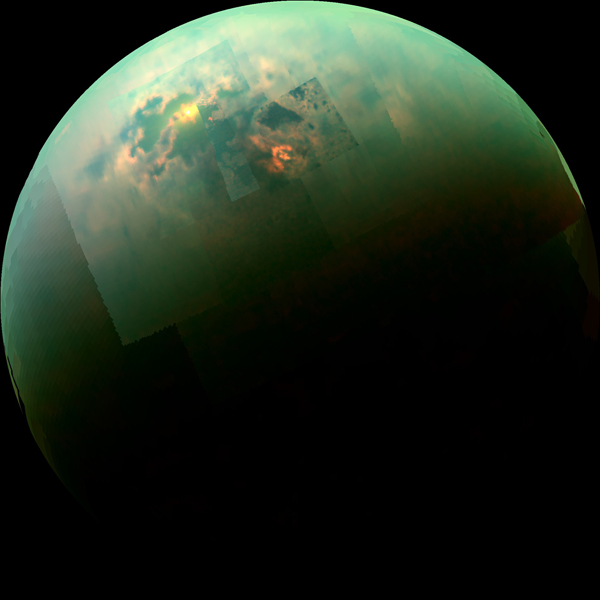QUOTE (ngunn @ Nov 1 2014, 02:24 PM)

Thanks for that, Jason. While you're here I was wondering if there's any chance of seeing by itself the single tile within the big mosaic that contains the specular reflection? The 'glint' is rather abruptly truncated by the high resolution strip in the published version. Also of interest would be to see the exact specular point located on the SAR map. If the surface is really smooth my rough calculations arrive at a solar reflection only 1km across. Is that about right?
Sure; once the data are public. The specuar relfection is coming from north of the islands west of the Throat of the Kraken. Previous specular reflections had solar footprints maybe ~1km in size, so I would expect similar for this one.
QUOTE (ngunn @ Nov 1 2014, 02:24 PM)

One more question - The mosaic has a hard circular outline but VIMS must have captured the atmosphere around the limb as well. Why is that not shown?
Right. Well, each of these VIMS cubes was acquired from a different spacecraft position. In fact, due to the way that VIMS works -- it actually has just one pixel that it shifts around to build up an image -- each PIXEL gets acquired with different geometry. Hence while I call it a 'mosaic', what it really is is each individual cube, mapped onto a cylindrical map, and then that map mosaic gets projected orthographically to get the final result. Hence there's no way to properly map atmosphere, so it the resulting image has that hard edge.
- VIMS-J
QUOTE (ngunn @ Oct 31 2014, 01:52 PM)

We're already discussing it! But I think a dedicated topic is definitely warranted so maybe the admins can move those posts out of the 'polarisers' thread and into this one?
Whoops -- sorry about jumping the existing thread. I had looked at that one, but I must not have gone down to the bottom of page 2. My bad. . .

